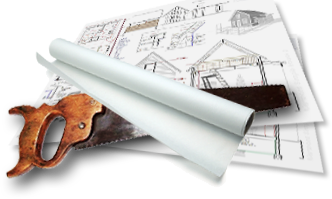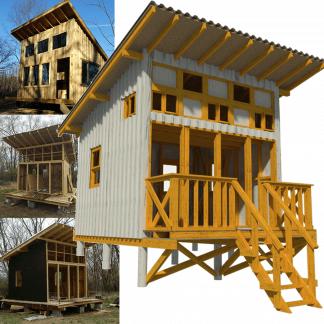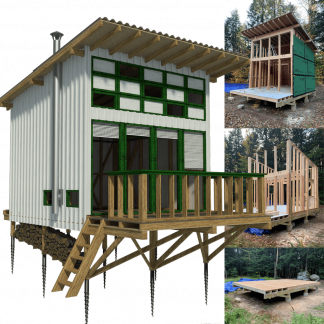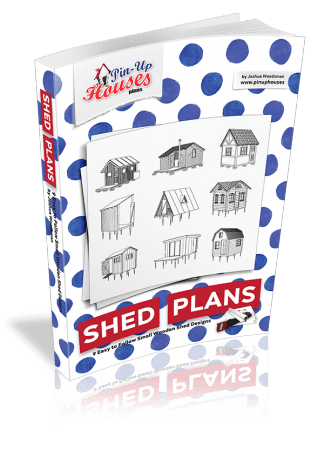Ever wonder why renovating your home feels so different from upgrading an office space? While both projects involve construction, budgets, and design choices, the goals and challenges couldn’t be further apart. A home renovation is often about personal comfort and expression, while an office renovation is driven by productivity, compliance, and business goals.
Understanding where these priorities and pitfalls differ is crucial for making smart decisions, whether you’re planning a small refresh or a major overhaul. Let’s break down how these two worlds diverge and what you need to know to succeed in each.
Setting Priorities – What Matters Most?
Home: Comfort, Style, and Emotional Satisfaction
When renovating a home, personal comfort and style take center stage. The space is a reflection of individual taste and lifestyle, so choices often lean toward features that enhance daily living—think open-concept kitchens, cozy reading nooks, or spa-like bathrooms. Homeowners prioritize how a space feels, opting for finishes, layouts, and designs that align with their personal vision of comfort.
This emotional connection can drive decisions more than function alone. While resale value is a consideration, homeowners are just as likely to invest in upgrades that bring them joy, even if they don’t offer the highest financial return. The process is about crafting a space that suits personal routines and preferences, whether that’s adding a statement light fixture or expanding a patio for family gatherings.
Office: Productivity, Compliance, and Collaboration
Office renovations prioritize function over form, with a focus on boosting productivity and fostering collaboration. Every square foot must serve a purpose—whether that’s improving workflow efficiency, accommodating team meetings, or ensuring compliance with regulations like ADA accessibility. Design choices favor layouts that reduce friction, support ergonomic needs, and enhance communication between teams.
Compliance and safety are non-negotiable in office spaces. Unlike home renovations where style choices dominate, offices must meet strict fire codes, zoning laws, and accessibility standards. Skipping these steps risks costly delays and fines. The ultimate goal is to create a space where employees feel supported and can perform at their best, blending efficiency with comfort where it matters most.
Common Pitfalls – Where Things Go Wrong
Home: Emotional Spending and Budget Creep
In home renovations, emotional decision-making often leads to budget creep. A homeowner might initially plan for standard finishes but fall in love with custom cabinetry or imported tiles that significantly increase costs. These upgrades, while beautiful, can derail budgets if not carefully managed. It’s easy to prioritize wants over needs when renovating personal space.
Another common pitfall is changing plans mid-project. Deciding to move a wall or upgrade fixtures halfway through can lead to delays and additional expenses. Without a clear plan and strict adherence to the budget, homeowners risk turning a manageable project into a financial strain, all in pursuit of the perfect home aesthetic.
Office: Stakeholder Overload and Compliance Oversights
Office renovations face their own pitfalls, often stemming from having too many stakeholders involved. Each department might have different needs—IT wants more cabling, HR asks for private spaces, leadership demands a sleek reception area. Without clear leadership and project scope, these competing interests can lead to delays and budget overruns as everyone pushes for their priorities.
Compliance oversights can also be costly. Failing to account for building codes, fire regulations, or ADA standards during planning can result in having to redo work or pay fines. These aren’t optional steps, and skipping them leads to bigger headaches down the road. Proper project management and expert consultation are critical to avoid these pitfalls.
Technology and Sustainability – Modern Must-Haves
Home: Convenience and Lifestyle Upgrades
Home renovations increasingly include smart technology for convenience and energy efficiency. Homeowners invest in smart thermostats, security systems, and lighting that can be controlled remotely. These features enhance daily life, adding both comfort and long-term savings through improved energy management.
Sustainability is another growing focus, with eco-friendly appliances, solar panels, and reclaimed materials becoming popular choices. These upgrades not only reduce environmental impact but also offer cost savings over time, making them a win-win for homeowners who prioritize green living.
Office: Infrastructure and Efficiency
In office spaces, technology integration is about scalability and efficiency. Upgraded network cabling, security access controls, motor control centers (MCCs) with modular MCC buckets, and energy management systems are essential for modern work environments. These investments support seamless functionality and ensure the office is future-proofed for technological advancements.
Sustainability is tied to certifications like LEED, which can provide tax incentives or boost corporate image. Energy-efficient lighting, HVAC systems, MCCs designed for energy monitoring, and waste reduction programs are common features in office renovations, balancing environmental responsibility with cost-effectiveness.
Managing Timelines – Disruption Strategies
Home: Living Through the Dust
Home renovations often mean living in the middle of the project, which can stretch out timelines. Homeowners might phase the work to keep parts of the house functional, but that can prolong disruption. For example, redoing a kitchen may involve temporary setups, like cooking on a hot plate in another room, which isn’t ideal but manageable for short periods.
However, flexibility can sometimes backfire. Without strict deadlines, contractors may prioritize other jobs, extending completion dates. Homeowners must balance patience with clear expectations, ensuring that contractors stick to the agreed timeline without cutting corners.
Office: Downtime Equals Lost Revenue
In office renovations, downtime directly impacts productivity and revenue, making strict timelines essential. Most businesses opt for phased renovations or schedule work during nights and weekends to minimize disruption. Even minor delays can ripple across teams, affecting morale and output.
Because of this, planning is more rigid. Office projects typically involve detailed schedules, contractor coordination, and contingency plans for temporary relocations or remote work. The stakes are higher when every hour of downtime translates into lost business, which makes timeline management a critical component of office renovations.
Conclusion
Is your renovation project designed for comfort, productivity, or both? Understanding the core purpose behind your space is what ultimately shapes successful outcomes, whether you’re upgrading a home or an office.
While the pitfalls and priorities differ—emotional spending at home, compliance hurdles at work—the need for clear goals, solid budgeting, and thoughtful planning remains constant. By recognizing these distinctions, you can navigate each project with greater confidence, ensuring that every decision aligns with your long-term needs and adds lasting value to your environment.








